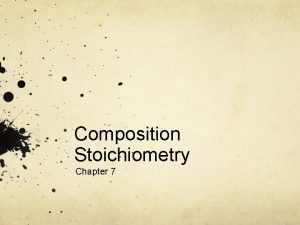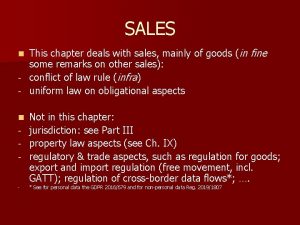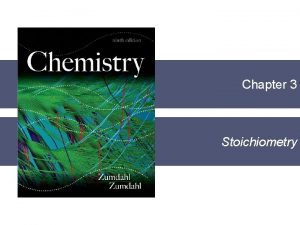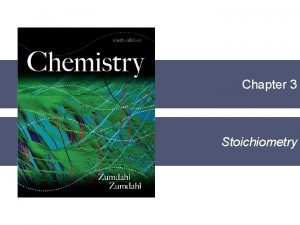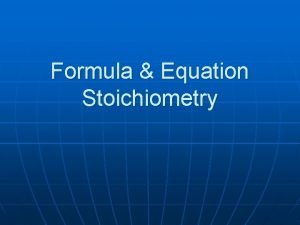Chapter 9 Stoichiometry Composition Stoichiometry Deals with the










- Slides: 10

Chapter 9: Stoichiometry

Composition Stoichiometry Deals with the mass relationships of elements in compounds We did this in Chapter 3 Converting g molecules and back

Reaction Stoichiometry Deals with the mass relationships between reactants and products in a chemical reaction Based on chemical equations and the law of conservation of matter

Reaction Stoichiometry Problems can be classified according to the information given in the problem, and the information you need to find (the unknown). We’ll be using tools to convert from the given quantity to the unknown quantity

4 Types of Problems Given Mol Unknown Mol Mass (g) Tools Mole ratio & molar mass Molar mass & mole ratio Molar mass, mole ratio, molar mass

Mole Ratio We will be using a mole ratio to convert from moles (or grams) of one substance in a reaction to moles (or grams) of another substance We always need to start with a balanced chemical equation

Mole Ratio A mole ratio is a conversion factor that relates the amounts in moles of any two substances involved in a chemical reaction We get this conversion factor from the balanced chemical equation. Mole ratios are exact equalities, and thus have infinite number of significant digits (i. e, ignore them when figuring out sig figs)

Mole Ratio 2 Al 2 O 3(l) 4 Al(s) + 3 O 2(g) The coefficients represent the relative amounts in moles of reactants and products. These relationships can be expressed in mole ratios

6 possible Mole Ratios 2 Al 2 O 3(l) 4 Al(s) + 3 O 2(g) 2 mol Al 2 O 3 4 mol Al 2 O 3 3 mol O 2 2 mol Al 2 O 3 4 mol Al 3 mol O 2 4 mol Al

Mole Ratios… Your turn List all the possible mole ratios CO 2(g)+2 Li. OH(s) Li 2 CO 3(s) +H 2 O(l) MAKE SURE THE EQUATION IS BALANCED FIRST!!!!!!!!!!!!!





